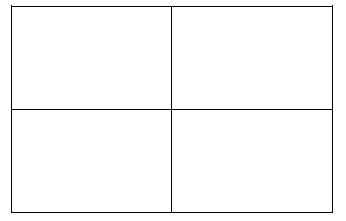Find the inverse. Determine whether the inverse represents a function.{(6, 3), (7, 4), (5, 5), (3, 6)}
A. {(4, 3), (6, 5), (6, 5), (4, 5)}; a function
B. {(3, 6), (4, 7), (5, 5), (6, 3)}; a function
C. {(4, 3), (3, 5), (6, 7), (4, 5)}; not a function
D. {(3, 6), (4, 7), (5, 5), (6, 3)}; not a function
Answer: B
You might also like to view...
Solve for the indicated variable.Solve for a.A = 5?a2
A. a = 
B. a = 
C. a = 
D. a = 
Use your grapher to graph f (x) =  Then sketch the graph.
Then sketch the graph.

Solve the problem.How many three-digit counting numbers do not contain any of the digits 1, 5, 7, 8, or 9?
A. 125 numbers B. 48 numbers C. 64 numbers D. 100 numbers
Solve the problem.The function r(x) = 95x describes a company's monthly revenue and  describes the monthly costs where x represents the number of units produced and then sold. Find the function, p(x), that describes the net profit or loss.
describes the monthly costs where x represents the number of units produced and then sold. Find the function, p(x), that describes the net profit or loss.
A. p(x) = 65x + 285,000 B. p(x) = 65x - 285,000 C. p(x) = -65x - 285,000 D. p(x) = 285,000 - 65x